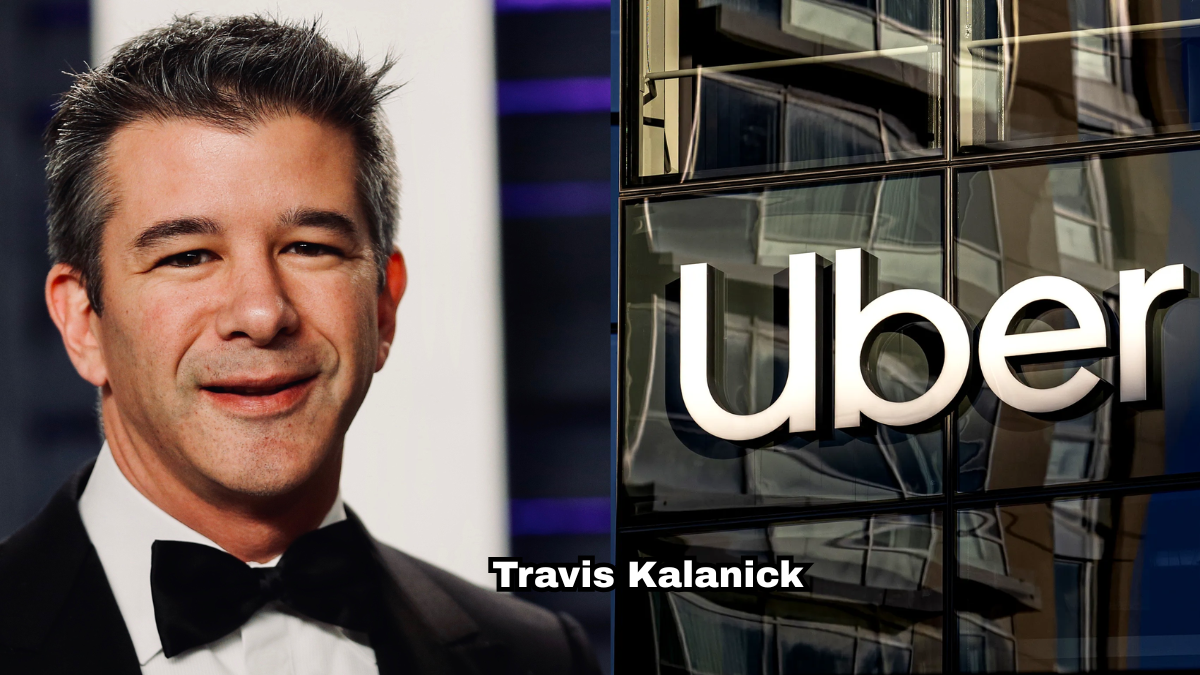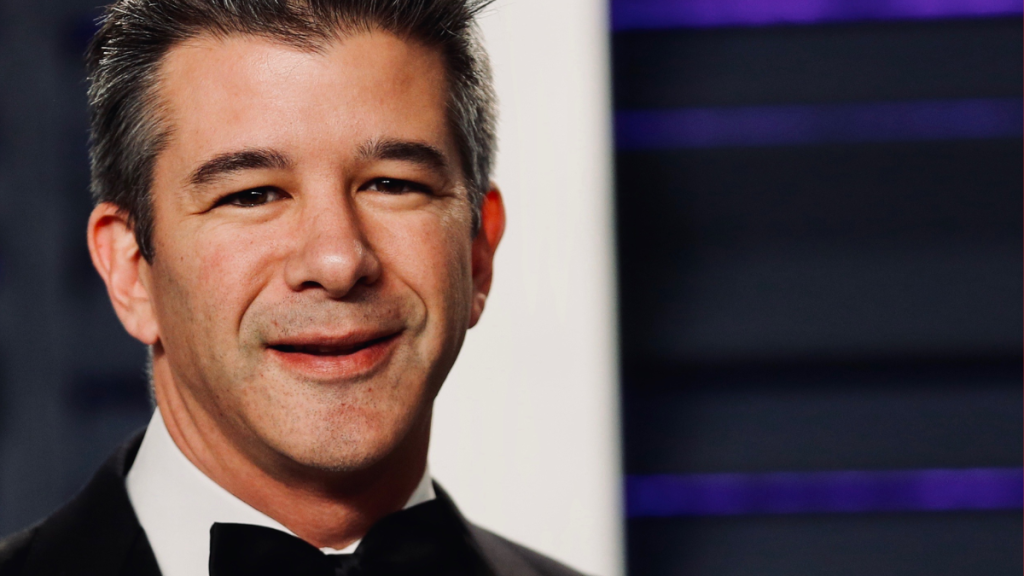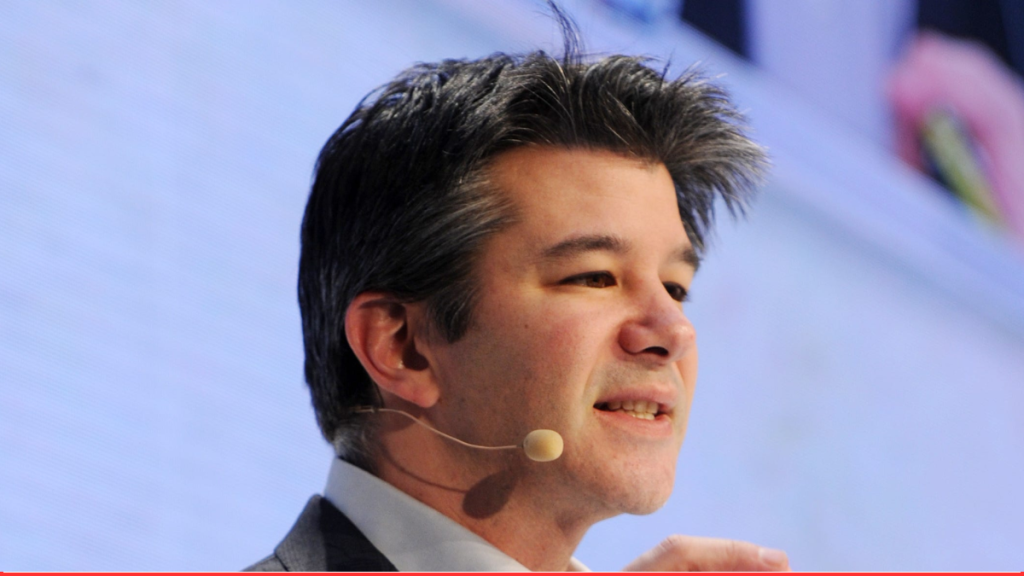
Advertisement
The Maverick Mind Behind Uber’s Global Disruption
In the high-speed world of Silicon Valley, few names have sparked as much admiration, controversy, and intrigue as Travis Kalanick. As the co-founder and former CEO of Uber, Kalanick’s journey from a computer science student to the disruptor of global transportation is the stuff of startup legends. With a bold, often unorthodox approach to leadership, he became a defining figure of the 21st-century tech boom, celebrated for his vision and criticised for his aggressive tactics.
“You’re not a real entrepreneur until you’ve been sued,” Kalanick once famously quipped — a quote that both defines his brash personality and reflects his tumultuous ride through Silicon Valley.
Born on August 6, 1976, in Los Angeles, California, Travis Cordell Kalanick was always a builder at heart. From a young age, he displayed a curious mind, eventually enrolling at UCLA to study computer engineering and business economics. His entrepreneurial spirit bloomed in college when he launched his first company, Scour, a peer-to-peer file-sharing service. Despite being sued by major media corporations for billions, the experience shaped his resilient outlook.
“I’m naturally contrarian. I like to go against the grain,” he told Vanity Fair in a 2014 interview. That contrarian instinct became Uber’s secret weapon — and occasionally, its Achilles’ heel.
In 2009, Travis co-founded UberCab, later renamed Uber, with Garrett Camp. What started as a luxury black car service in San Francisco quickly exploded into a global ride-sharing empire, valued at over $70 billion at its peak. Kalanick’s “growth at all costs” mantra fueled Uber’s meteoric rise — but also cultivated a corporate culture that drew widespread criticism.
He revolutionized how people move, offering a frictionless experience through real-time GPS tracking, cashless payments, and dynamic pricing. But Uber’s journey under Kalanick wasn’t smooth. A series of scandals — from workplace harassment allegations to regulatory clashes — led to a boardroom coup that forced him to step down as CEO in 2017.
“We messed up,” Kalanick admitted in a memo following internal investigations. “I need to fundamentally change as a leader and grow up.”
Since stepping away from Uber, Kalanick hasn’t slowed down. He founded CloudKitchens, a ghost kitchen startup that’s quietly building a real estate-backed empire to fuel the booming food delivery economy. Though far from the media spotlight now, Kalanick remains a significant player in the tech ecosystem, reinventing himself while staying true to his core entrepreneurial DNA.

Travis Kalanick’s Early Life and Startup Journey Before Uber
1. Born in Los Angeles With a Tech Twist
Travis Cordell Kalanick was born on August 6, 1976, in Los Angeles, California, into a middle-class family. His mother was a retail advertiser and his father worked as a civil engineer — sparking Travis’s early interest in systems and technology.
2. A Natural Problem Solver Since Childhood
As a child, Travis showed signs of entrepreneurship by selling Cutco knives door-to-door. He was also an early coder, learning to program in middle school.
3. His First Taste of Tech Was AOL-Inspired
During his teenage years, Kalanick was obsessed with America Online (AOL) chat rooms and gaming forums, where he explored networking and online connectivity — a seed for his future tech empire.
4. UCLA and the Birth of a Tech Mindset
Kalanick studied computer engineering and business economics at UCLA, but dropped out in 1998 to pursue entrepreneurship full-time — a classic Silicon Valley move.
5. Scour.net: A Risky First Venture
Alongside classmates, Travis co-founded Scour.net, a peer-to-peer search engine for music and video files, similar to Napster. It gained huge traction but also legal heat.
6. Sued for $250 Billion
Scour was sued by major media companies for copyright infringement. The lawsuit totaled $250 billion, leading to the company’s bankruptcy — a crash course in legal warfare.
7. Red Swoosh: His Comeback Story
In 2001, Kalanick launched Red Swoosh, another peer-to-peer file-sharing platform. This time, he prioritized legal distribution and content delivery optimization.
8. Lived Lean as a Startup Warrior
Travis reportedly lived with minimal income, even moving back in with his parents while building Red Swoosh.
9. Exit at $19 Million
Red Swoosh was acquired by Akamai Technologies in 2007 for $19 million — Kalanick’s first major financial win.
10. Lessons That Fueled Uber
The struggles and lessons from Scour and Red Swoosh taught Kalanick how to scale aggressively, dodge legal traps, and embrace grit — all of which shaped Uber’s founding DNA.

Inside Uber: Innovations, Controversies, and Leadership Style
1. The Idea Was Born Out of a Paris Problem
The idea for Uber came to Travis Kalanick and co-founder Garrett Camp in 2008 when they struggled to hail a cab in Paris. What if you could tap a button and summon a ride?
2. Launched as UberCab in 2009
Uber was originally launched as UberCab in San Francisco. Its black car service quickly gained popularity among tech-savvy urbanites before expanding to ride-sharing in 2010 and going global soon after.
3. Disrupted the Global Taxi Industry
Under Kalanick’s leadership, Uber grew to operate in over 600 cities across 70+ countries by 2017. His aggressive expansion strategy disrupted traditional taxi industries, often sparking regulatory battles.
“Every city we go to, we’re going to be fighting the man,” Kalanick said in a 2014 Business Insider interview.
4. Mastermind Behind Surge Pricing
One of Kalanick’s innovations was dynamic pricing, or “surge pricing,” which increased fares during high-demand periods. Though controversial, it became a core part of Uber’s business model.
5. An Intense and Competitive Culture
Kalanick was known for creating a hyper-competitive work environment. He encouraged a “warrior mentality,” often comparing running Uber to being in battle — a stance both admired and criticized.
“We’re in a political campaign, and the candidate is Uber. And the opponent is an asshole named Taxi,” he once told employees.
6. Faced a Storm of Scandals in 2017
Kalanick’s leadership came under fire during Uber’s “year of hell” in 2017. Allegations of workplace harassment, gender discrimination, and toxic culture prompted an internal investigation led by former U.S. Attorney General Eric Holder.
7. #DeleteUber and the Political Fallout
In early 2017, Uber faced public backlash for appearing to support President Trump’s travel ban. The resulting #DeleteUber campaign led to 200,000 account deletions, tarnishing the brand’s image.
8. Clashes with Apple and Google
Kalanick’s Uber clashed with both Apple and Google. Apple CEO Tim Cook once summoned him for secretly tracking iPhones — a near disaster that could have banned Uber from the App Store.
9. Boardroom Battle and Forced Exit
In June 2017, amid growing investor pressure, including from major stakeholder Benchmark Capital, Kalanick was forced to resign as CEO. Though no longer in charge, he remained on Uber’s board for a while.
“It’s time for me to step aside and let Uber move into its next chapter,” Kalanick said in his resignation letter.
10. Legacy: A Mixed Bag of Genius and Chaos
Kalanick left behind a company that transformed global transport but was deeply criticized for its internal operations. Yet his boldness and product vision created a new economy of mobility.
What’s Next: CloudKitchens, Investments, and His Legacy in Tech
1. CloudKitchens: His Secret Comeback Play
After stepping down from Uber, Travis Kalanick quietly launched CloudKitchens in 2018, a startup focused on ghost kitchens — commercial kitchens optimized for food delivery. The company leases real estate and builds tech-enabled spaces for restaurants to operate delivery-only kitchens. His goal? To reshape the food delivery infrastructure the way Uber transformed mobility.
2. Massive Saudi Investment Raised Eyebrows
CloudKitchens raised $400 million from Saudi Arabia’s Public Investment Fund in 2019 — a move that drew both financial buzz and ethical scrutiny, considering Saudi Arabia’s controversial reputation in global politics. The funding signaled Kalanick’s re-entry into big-stakes entrepreneurship.
3. Investing Through 10100 (Ten-One-Hundred)
Kalanick also founded 10100 (Ten-One-Hundred), a personal investment fund focused on real estate, e-commerce, and emerging markets. Through this venture, he backs startups and non-profits, signalling a more mature, diversified approach to business post-Uber.
4. A Quieter, More Calculated Persona
Unlike his brash, media-heavy Uber days, Kalanick now maintains a low public profile, avoiding major press coverage and social media. Those close to him describe this phase as “focused, methodical, and deeply strategic”.
5. His Tech Legacy Is Undeniable
Despite his controversies, Kalanick’s influence remains monumental. He helped create the gig economy, transformed urban transportation, and inspired a generation of entrepreneurs to think bigger and bolder. Whether through Uber or CloudKitchens, he’s forever etched into the DNA of Silicon Valley.
“He’s the ultimate disruptor — you can love him or hate him, but you can’t ignore him,” a former Uber executive once said.
Travis Kalanick’s journey has been one of constant reinvention. After his high-profile departure from Uber, he didn’t retreat into obscurity but instead leveraged his unique vision to disrupt new industries, particularly with CloudKitchens, a venture that’s already reshaping the future of food delivery. His diverse investment strategies, coupled with a quieter, more focused persona, mark the evolution of a founder who’s learnt from his past and is setting his sights on future opportunities. While his legacy at Uber remains mixed with both admiration and controversy, it’s clear that Kalanick is far from done shaping the tech landscape. Whether it’s through 10100 or his ongoing ventures in the food and tech space, Kalanick continues to influence Silicon Valley, proving that once a disruptor, always a disruptor.
